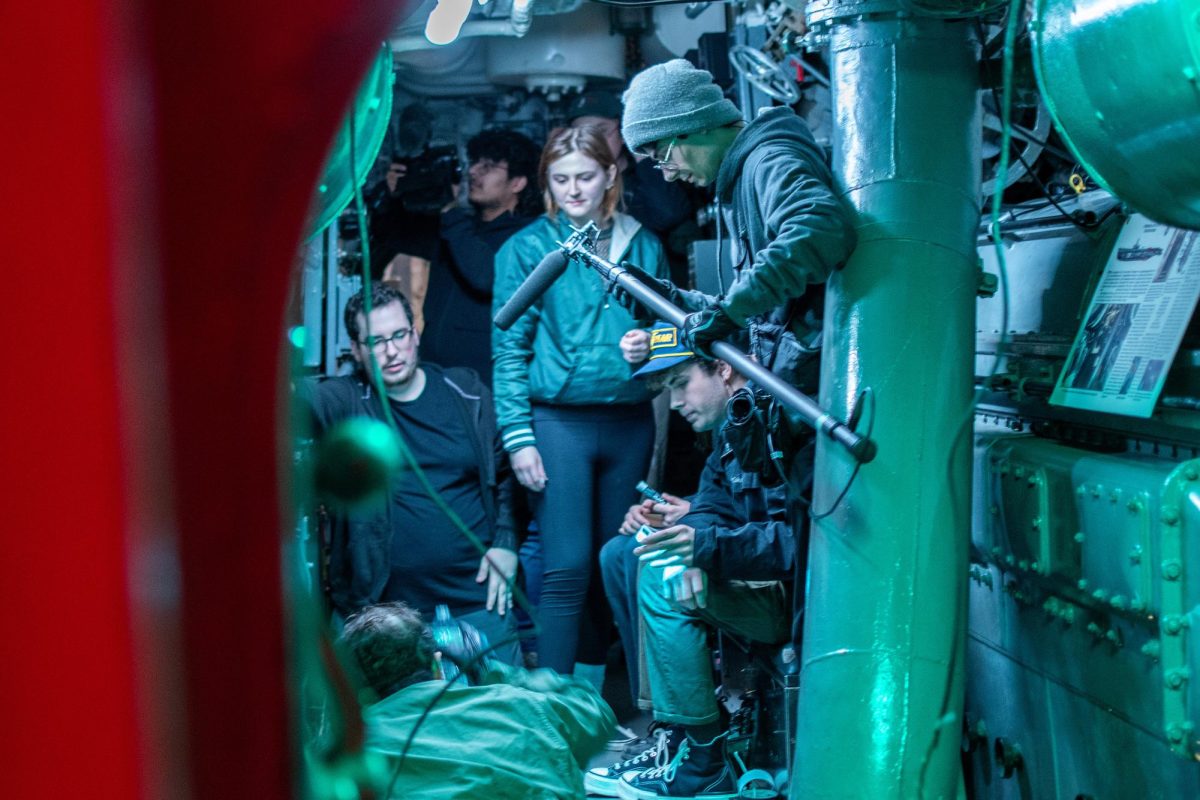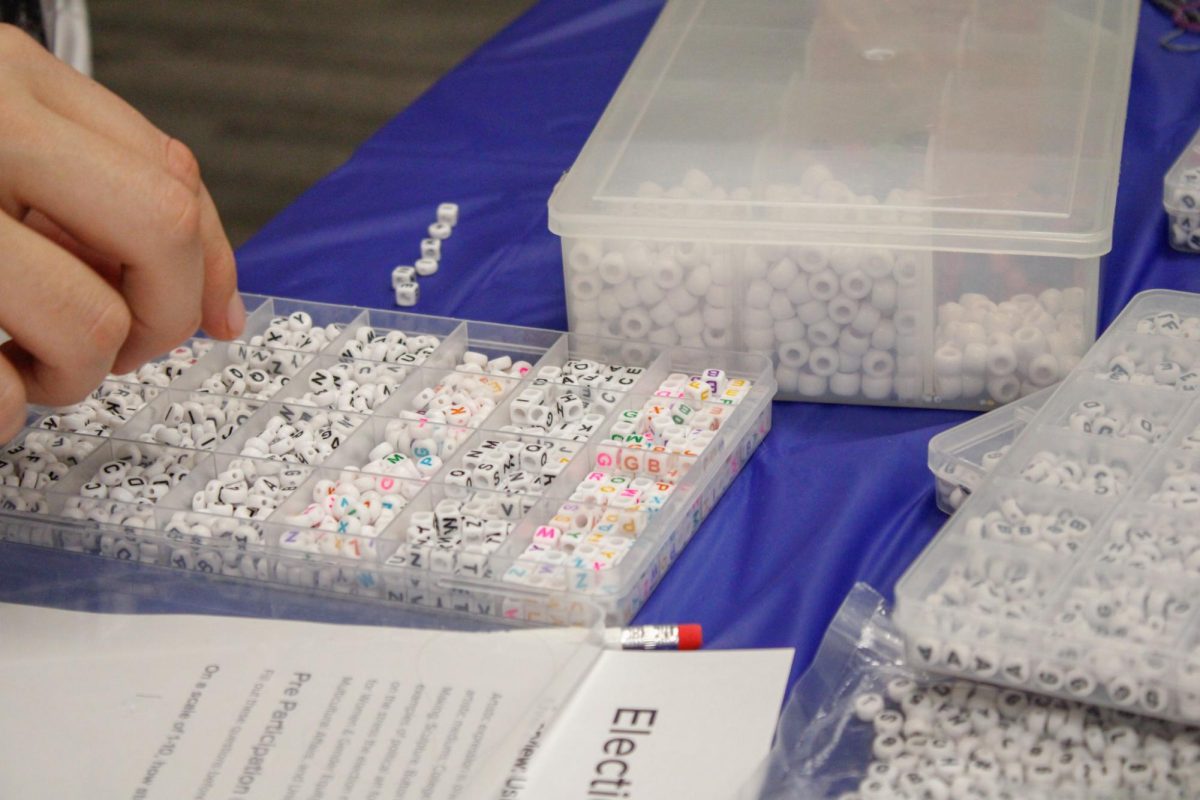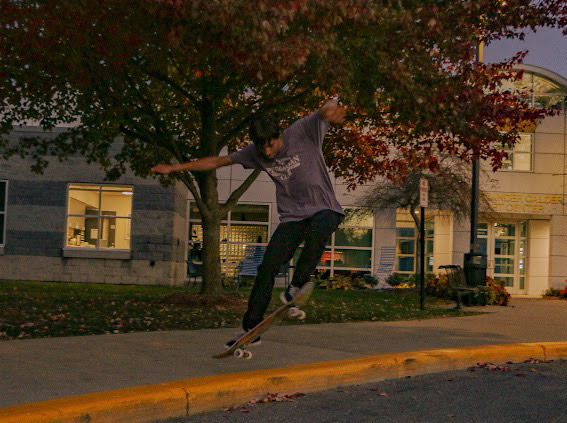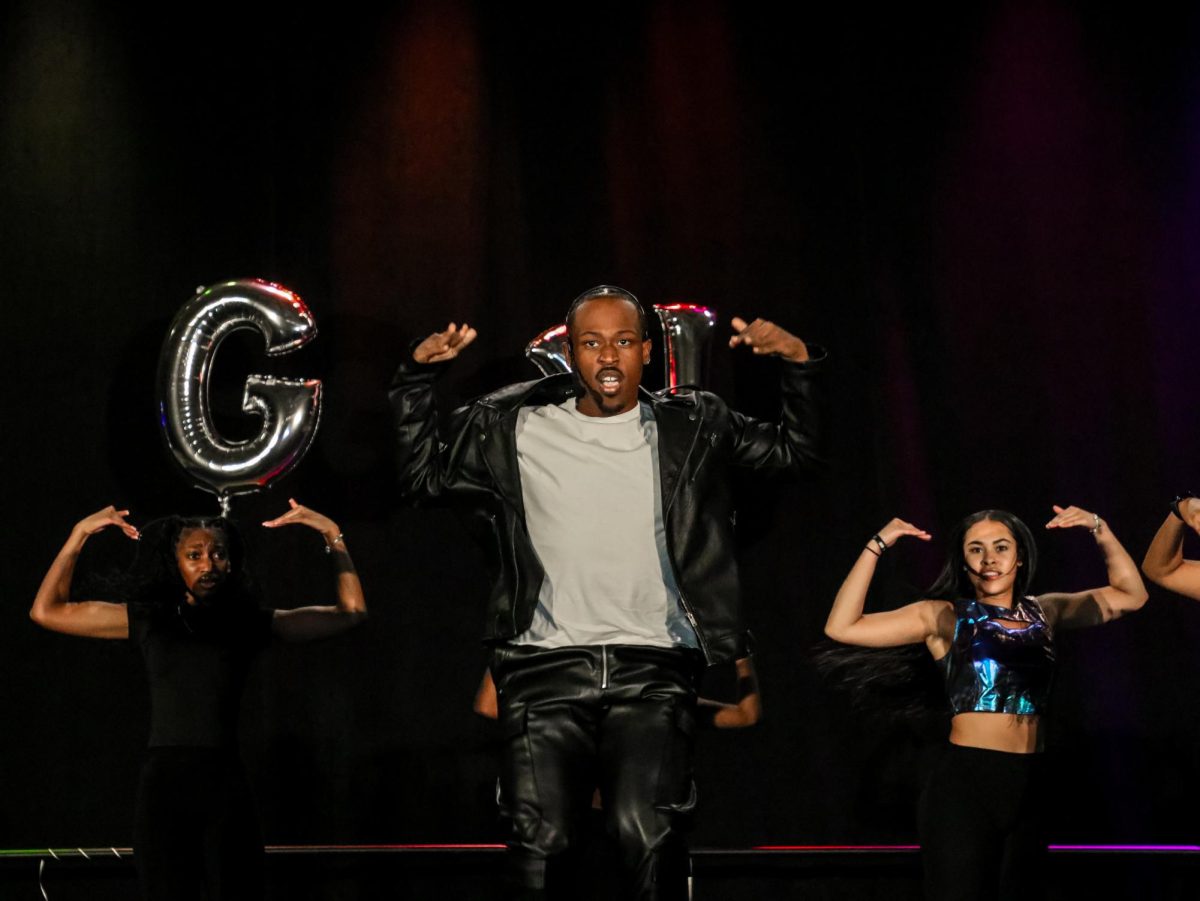Grand Valley State University film and video production majors have the option to create short films of up to 12 minutes as their senior thesis project. In student Tanner Hamilton’s case, this was an opportunity for him to bring life to a project he’d been thinking about for years- “Proteus.”
Hamilton aimed to create a film that suspends reality by turning a real submarine into a futuristic spaceship. During the filming process, Hamilton and his crew worked to overcome the confines of the setting to bring Hamilton’s creative vision to life.
Hamilton said “Proteus” is a sort of homage to his inspirations.
“It’s about two stranded astronauts who descend into paranoia and madness after a mysterious deep space accident,” Hamilton said. “I’m a huge fan of science fiction, horror and action (and) any kind of otherworldly genre. For my senior thesis project, I just wanted to make a tribute to the kind of movies that made me want to be a filmmaker.”
Hamilton’s first challenge, of course, was to find a spaceship. Or, at least, the closest thing he could, which ended up being the USS Silversides Gato-class submarine. The submarine is the featured exhibit at the USS Silverside Submarine Museum in Muskegon, Michigan.
The submarine sits half-submerged in the Muskegon Channel and is open for public tours through the museum. Hamilton had been tossing around the idea of using the submarine in a project for years after a childhood visit to the museum, but the opportunity had never come about.
“When I was much younger, I was in Cub Scouts and we did an overnight campout on the submarine, and it’s always been in the back of my head like, ‘Wow, that was a really cool place, I’d love to make a movie there some time,’” Hamilton said.
There were many challenges to film in this location: shooting video in a tight, enclosed space, transporting equipment down the submarine’s ladders and overnight shoots. Since the museum was open for its regular hours, Hamilton and his crew had to resort to filming in the space at night.
“Every set has its own challenges, and it’s a unique kind of problem-solving thing. You always have to figure out how to make things work,” Hamilton said. “This is definitely the most ambitious project I’ve ever done. I’ve been on a lot of interesting sets, but I haven’t done a ton of things at this scale (with) my own projects, so it was really a new experience.”
Michael Modugno, another senior in the Film and Video program and one of the student sound operators on the project, said the late-night shoots were difficult.
“I’ve done late night shoots before, but this was my first official overnight shoot, which was really grueling the first day because I had a long day of classes leading into the shoot and ended up staying awake over 24 hours,” Modugno said. “On the second day, because I had just woken up, we were in the submarine (so there wasn’t daylight) and I would forget the time. 3 a.m. felt like 3 p.m.”
Despite the filming challenges, crew members who were involved with “Proteus” created a comfortable environment throughout the process.
“We had those fun buzzwords of, ‘we’re shooting in a submarine,’ and ‘it’s an alien movie,’ so everybody was very excited about the idea. People were kind of willing to put up with some worse conditions than they might’ve if it took place in an apartment or something,” Hamilton said. “The crew we had really is what made (the project special). Everybody was so kind and had such positive energy, and really gave it their all with making it the best that it (the shoot) could be. I’m very happy that I got to work with everybody there.”
Similarly, Modugno took the obstacles associated with the project as a chance to grow.
“The submarine definitely forced me to adapt. Working in that confined space and maneuvering with the boom pole, making sure not to bump anything. I had to do a lot of problem-solving and figure out how I was going to squeeze myself in the space without interfering with the scene, while also getting optimal sound,” Modugno said. “But the submarine was super convenient for sound because it was soundproof, so there could be some noise in the next room over and we wouldn’t hear it.”
On top of that, Modugno was given the chance to practice a new skill, timecode, a tool that works with syncing cameras and audio files. Much like Modugno, Hamilton said working on the project was a major source of growth. He said the project pushed him beyond his normal role of working behind the camera to wearing the hats of writer, director, producer, director of photography and editor.
Beyond the production of the film, Hamilton aims to increase the audience of the work by branching out into communities outside of GVSU.
“We’re hoping to submit to more film festivals in Michigan so more people can see it around the state,” Hamilton said. “That will also help with networking with other filmmakers.”
The “Proteus” crew and other senior thesis film crews are preparing for the Spring Showcase in April. Hamilton and other budding filmmakers in the program look forward to seeing their work showcased on the big screen and premiering their hard work for peers and mentors.










